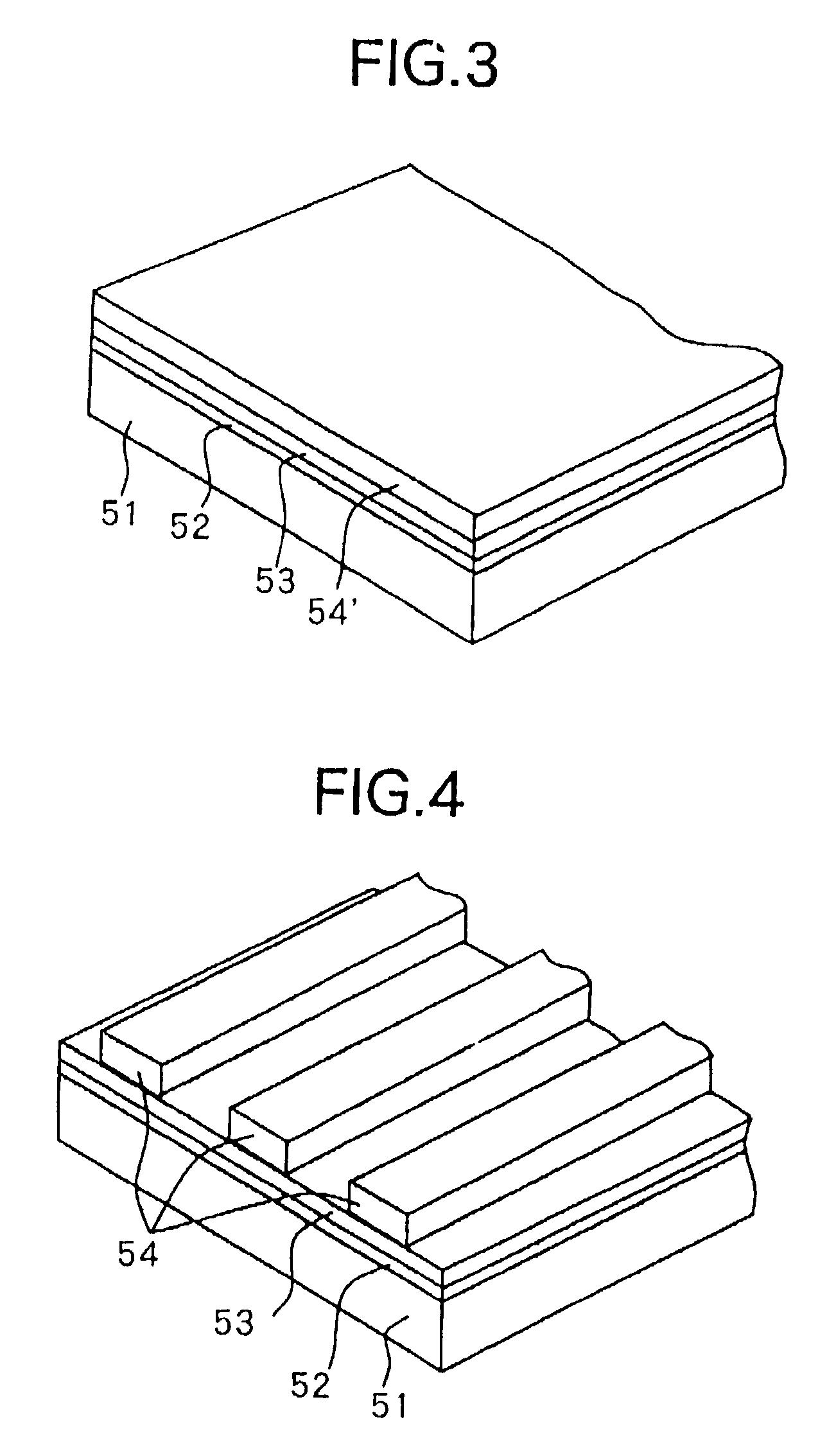Optical waveguide and method for producing same
a technology of optical waveguides and optical fibers, applied in semiconductor lasers, instruments, transportation and packaging, etc., can solve the problems of device complexity, cost versus effect, and not yet spread, and achieve the effect of ensuring high light propagation characteristics
- Summary
- Abstract
- Description
- Claims
- Application Information
AI Technical Summary
Benefits of technology
Problems solved by technology
Method used
Image
Examples
first embodiment
[0117](First Embodiment)
[0118]First, an explanation will be made of the configuration of an optical waveguide according to a first embodiment of the present invention with reference to FIG. 1.
[0119]FIG. 1 is a view showing the sectional configuration of an optical waveguide 1 according to the present embodiment. This optical waveguide 1 is provided with a multilayer circuit board 2, an optical waveguide path 11 bonded to the multilayer circuit board 2 via a bonding layer 6, a light receiving element 21 mounted on the multilayer circuit board 2 over the optical waveguide path 11 as a spacer, IC chips 25 and 35, and a light emitting element 31. Here, the multilayer circuit board 2 corresponds to a concrete example of the “substrate” and “second substrate” of the present invention. Further, the IC chips 25 and 35 correspond to concrete examples of the “integrated circuit” of the present invention.
[0120]The multilayer circuit board 2 is an electric circuit substrate comprised of a plura...
second embodiment
[0153](Second Embodiment)
[0154]The second embodiment relates to a method for producing the optical waveguide. The optical waveguide covered by this method is similar to that of the first embodiment except for the point that the optical waveguide paths are spaced from each other. Below, an explanation will be made of the method for producing the optical waveguide of the present embodiment by referring to FIG. 1 through FIGS. 5A and 5B and FIG. 13 through FIG. 20. FIG. 13 through FIG. 20 are partially cutaway perspective views representing steps of production. Note that constituent elements the same as those of the first embodiment are given the same reference numerals and detailed explanations thereof are omitted.
[0155]In the method of production according to the present embodiment, first, in the same way as the steps of productions shown in FIG. 2 to FIGS. 5A to 5B of the first embodiment, the substrate separation layer 52 and the optical waveguide path 11 are formed on a transparen...
third embodiment
[0166](Third Embodiment)
[0167]The third embodiment of the present invention relates to a method for producing a optical waveguide path. The structure of the optical waveguide covered by the method is similar to that shown in FIG. 1. The method for producing the optical waveguide according to the present embodiment is similar to that of the first embodiment except for the point that the method for forming the inclined surfaces 11a and 11b of the optical waveguide path 11 is different. Below, the explanation will be made by referring to FIG. 21 through FIG. 23. Note that constituent elements the same as those of the first embodiment are given the same reference numerals and detailed explanations thereof are omitted.
[0168]In the method for forming the inclined surfaces of the present embodiment, first, as shown in FIG. 21, an optical waveguide path 11 comprising the upper cladding layer 53, core layer 54, and the lower cladding layer 55 is formed on a transparent substrate 51 via the s...
PUM
| Property | Measurement | Unit |
|---|---|---|
| thickness | aaaaa | aaaaa |
| outer angles | aaaaa | aaaaa |
| refractive index | aaaaa | aaaaa |
Abstract
Description
Claims
Application Information
 Login to View More
Login to View More - R&D
- Intellectual Property
- Life Sciences
- Materials
- Tech Scout
- Unparalleled Data Quality
- Higher Quality Content
- 60% Fewer Hallucinations
Browse by: Latest US Patents, China's latest patents, Technical Efficacy Thesaurus, Application Domain, Technology Topic, Popular Technical Reports.
© 2025 PatSnap. All rights reserved.Legal|Privacy policy|Modern Slavery Act Transparency Statement|Sitemap|About US| Contact US: help@patsnap.com



